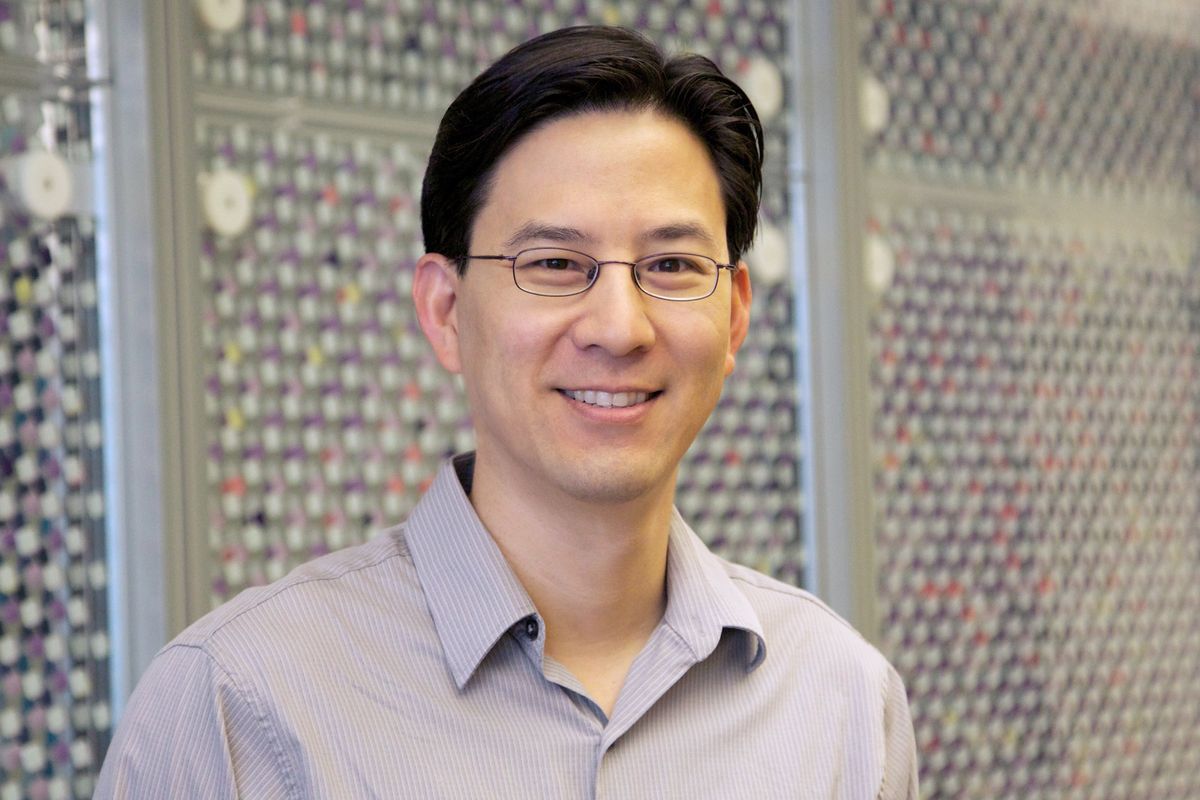William Shih, a biochemist at Harvard Medical School, explores ways to construct tiny structures out of DNA for biomedical applications. By building on DNA origami, a method for programming DNA to self-assemble into nanoscale shapes, Shih plans to manufacture bigger and more complex molecular robots and to deliver DNA origami cancer vaccines.1

In his lab at Harvard Medical School, William Shih uses structural DNA nanotechnology to design molecular robots for biomedical applications.
Wyss Institute at Harvard University
Why is it challenging to build large structures using traditional DNA origami methods? How did you overcome those challenges?
With DNA origami, we are limited to twice the size of the scaffold strand, which is around 10,000 nucleotides long. It’s not feasible to find a scaffold strand long enough to build a larger structure.
We developed an elegant solution called crisscross DNA origami to build the biggest asymmetric structure ever programmed to self assemble—two micrometers by two micrometers—and constructed it from more than 1,000 unique DNA origami components, far surpassing the 64 DNA origami structure that another team built and patterned for the Mona Lisa.2,3 We designed each DNA origami to only interact with specific ports in other DNA origami, akin to a jigsaw puzzle.
Currently, we can build nanorobots the size of a ribosome, but anything larger, such as a bacterial cell, is difficult. Before crisscross DNA origami, it was hard to imagine how we would do this. Now, we provide a potential route to building larger structures with more sophisticated capabilities.
How do you use DNA origami for therapeutic applications?
Cancer immunotherapy is one of the biggest medical revolutions, but response rates to many life-saving medicines are still low. One reason is that cancer creates an immunosuppressive environment that neutralizes many benefits of these drugs. We developed a DNA origami-based cancer vaccine to help reeducate the immune system to recognize and attack the tumor cells.4 To achieve this, we designed a DNA origami pegboard with tumor antigens on one side and precisely spaced adjuvant oligonucleotides designed to raise the alarm to the immune system attached on the other side. This approach enhanced cytotoxic T cell activation, inhibited tumor growth, and worked synergistically with immunotherapy in a mouse model of melanoma.
This interview has been edited for length and clarity.
References
- Rothemund PWK. Nature. 2006;440(7082):297-302.
- Wintersinger CM, et al. Nat Nanotechnol. 2023;18(3):281-291.
- Tikhomirov G, et al. Nature. 2017;552(7683):67-71.
- Zeng YC, et al. bioRxiv. 2023.


